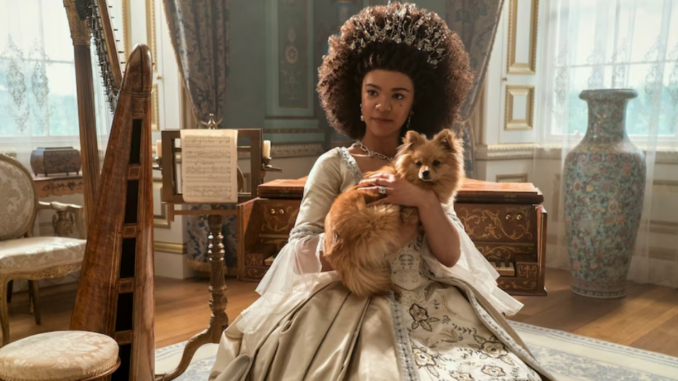
The world of Bridgerton has captivated audiences with its lavish settings, rich storytelling, and, most notably, its compelling characters. As fans eagerly await the new prequel centered around Queen Charlotte, many are left wondering: who was the real Queen Charlotte? This essay aims to explore the life and legacy of this intriguing historical figure, contrasting the factual aspects of her life with the fictionalized portrayal seen in Bridgerton.
A Royal Beginning: Birth and Early Life
Queen Charlotte, born on May 19, 1744, in Mecklenburgh-Strelitz, Germany, was originally named Charlotte Sophie. The daughter of Duke Charles Louis Frederick of Mecklenburg and Princess Elizabeth Albertine of Saxe-Hildburghausen, her early life was characterized by the privileges of royalty. However, she faced the constraints typical of women in her era, where personal choice often played second fiddle to political alliances. Charlotte was only 17 years old when she married King George III of England in 1761, a union that would shape her legacy.
The circumstances of their marriage were largely political. Charlotte was chosen to strengthen the alliance between Britain and her home territory. Despite this, her marriage to George III would evolve into a partnership marked by both affection and mutual respect. Historians often point to Charlotte’s supportive nature as instrumental in helping George navigate the challenges of being a monarch during a tumultuous period in British history.
A Queen’s Role in a Changing Nation
As Queen, Charlotte faced the challenge of being a woman in a male-dominated society. Yet, she was more than just a figurehead; she was an active participant in her husband’s reign. George III struggled with periods of mental illness, and Charlotte’s unwavering support provided him with a sense of stability. She was known for her strong sense of duty, which endeared her to the public. Unlike many of her contemporaries, she took an active interest in various aspects of government and social issues, often engaging with her husband on matters of state.
Charlotte’s reign coincided with significant changes in Britain, including the American Revolution and the onset of industrialization. Her contributions to the arts and sciences were noteworthy. She established Kew Gardens and played a pivotal role in promoting botanical exploration, making it a center for horticultural advancement in England. Moreover, she was a patron of the arts, supporting composers like Handel and musicians like Johann Christian Bach. Her appreciation for the arts can be seen as a precursor to the cultural flourishing depicted in Bridgerton.
A Legacy of Family and Influence
Queen Charlotte and King George III had a remarkable family life, having 15 children together. Their union was characterized by a deep commitment to family values, and they instilled a sense of duty and responsibility in their children. Charlotte’s role as a mother is often highlighted in historical accounts, showcasing her dedication to raising her children with a strong moral compass.
However, the personal and political complexities of royal family life are vividly portrayed in Bridgerton, where family dynamics take center stage. The series encapsulates the pressures of marriage and motherhood, emphasizing themes of love, duty, and societal expectations—elements that resonate with the reality of Charlotte’s life.
The Historical Figure vs. Fictional Representation
While Bridgerton presents a glamorous and often exaggerated version of Queen Charlotte, the real queen’s life was marked by both triumph and tragedy. The prequel’s portrayal of her character leans heavily into the drama and intrigue often associated with royalty, highlighting her as a formidable yet vulnerable figure. While this fictionalized account allows for an engaging narrative, it is essential to separate fact from fiction.
In Bridgerton, Queen Charlotte is depicted as a woman of power and influence, navigating the complexities of court life with charm and wit. This portrayal is not entirely inaccurate; Charlotte was indeed influential in shaping social trends and fostering a culture of creativity. However, her struggles with personal loss, her husband’s health crises, and the political turmoil of her time add layers to her character that the series may overlook in favor of entertainment.
Queen Charlotte’s Impact on Modern Culture
Charlotte’s legacy transcends her role as queen. She is often credited with influencing modern perceptions of monarchy and women in power. Her life story resonates with contemporary discussions about female agency, leadership, and the complexities of navigating societal expectations. As Bridgerton draws from her life to craft a narrative rich in drama and romance, it simultaneously invites audiences to reflect on the real challenges faced by women in history.
The prequel aims to delve deeper into Charlotte’s character, portraying her as a multi-dimensional figure whose story is both aspirational and relatable. This exploration encourages viewers to question the narratives surrounding historical figures, considering the societal constraints they faced and the legacies they left behind.
Conclusion: The Enduring Legacy of Queen Charlotte
As fans prepare to immerse themselves in the world of Bridgerton’s prequel, they must remember that the character of Queen Charlotte, while inspired by a real historical figure, is also a product of creative storytelling. The real Queen Charlotte was a woman of remarkable strength, intelligence, and resilience, navigating the complexities of royal life in a time of great change.
Her legacy is not just confined to the walls of royalty; it extends to modern society, where discussions around gender, power, and influence continue to evolve. In exploring the life of Queen Charlotte, we gain insight not only into the past but also into the ongoing dialogue about women’s roles in leadership and the impact they have on the world. As Bridgerton invites us to witness a reimagined version of history, let us also honor the real stories that shaped the course of time, understanding that behind every captivating narrative lies a truth waiting to be uncovered.
